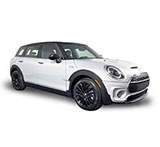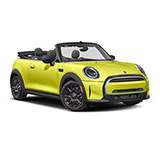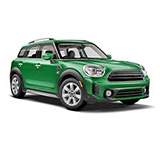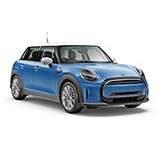MINI
Buying Guides • Advice • Reviews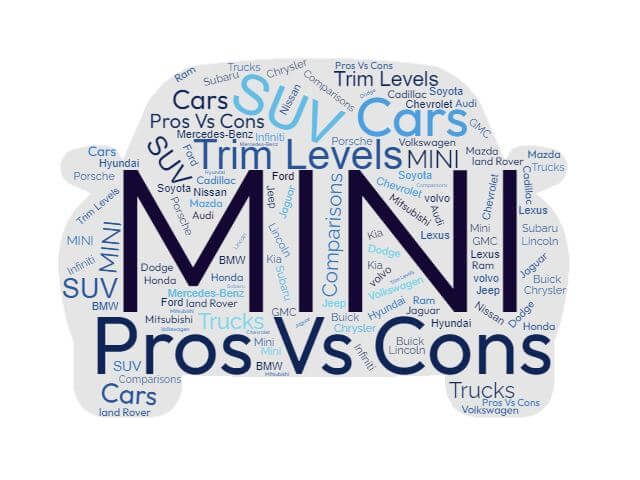
About MINI
The Mini is a compact economy car built by BMC (British Motor Corporation) and its successors from 1959 until 2000. The two-door Mini design was created as an affordable, reliable British city car to compete with fuel-sipping German microcars during the 1956 oil crisis. The Mini's iconic look was popularized in "The Italian Job" in the 1960s, and the Mini Cooper S racecar won three victories at the Monte Carlo Rally. The distinctive Mini marque was later sold to BMW, whose new MINI designs have been built and sold to customers since 2001.
1957) Sir Alec Issigonis, designed the original small car. The prototype ADO15 "Orange Box" was completed in October 1957, using a monocoque shell, with visible welded seams on the outside of the car, and externally mounted hinges for doors and trunk lid. A transversely mounted, water-cooled four-cylinder engine, coupled to a four-speed, oil lubricated transmission was used with a front-wheel-drive. The suspension used compact progressive rate rubber cones that made the Mini handle like a go-kart. Sliding windows enabled storage pockets in the hollow doors. Originally, the trunk lid was bottom-hinged to allow the car to be driven with the hood open for greater luggage space.
1959) Sir Alec Issigonis and BMC won the Dewar Trophy for the design and production of the Mini. Production models had front and rear subframes on the unibody, an engine size of 51.7 cu-in and a top speed of 72 mph. Both the Austin Mini and Morris Mini were marketed until 1969, when Mini became a marque in its own right; however, it was the Morris version that was known as "the Mini".
1961-1971) The Mini was adapted by BMC and the Cooper Car Company to become a racecar, the Mini Cooper, in 1963 becoming the turbocharged Mini Cooper S, and in 1964, 1965 and 1967 winning the Monte Carlo Rally.
1961-69) More luxurious variants of the Mini were built featuring a more traditional notched-back design with longer rear wings and larger trunks. The overall length increased to 10.7 ft. Front-end treatment and additional chrome and wheel treatments also created a less utilitarian design.
1963-1964) Hornet and Elf special bumper overrides appeared. Mark I's had a combination of leather and cloth seats, whereas later models had full leather seats. Mark II engines changed to a single carburetor 38 bhp 60.9 cu-in engine with a top speed of 77 mph. Front drum brakes changed from single leading shoe brakes to stronger twin leading shoes. Concealed door hinges first appeared.
1964) A Hydrolastic suspension system debuted which added roll stiffness and a softer ride, while keeping ride comfort, body leveling, good control of the road wheel, and tire contact with the road surface.
1965) The four-speed automatic transmission option became available on Mini-matic models.
1966) A Mark III facelift introduced wind-up windows, fresh-air vents, and disk brakes.
1967) The Mark II Mini featured a redesigned grille, and a larger rear window. The Spanish car company Authi began making a variety of Mini types in Pamplona, Spain under the Morris name.
1969) The upmarket Wolseley and Riley versions of the Mini were replaced by the Mini Clubman with a more square front look.
1970) A fiberglass version of the Mini Mark II was developed for British Leyland’s Chilean subsidiary beginning in 1970. The fiberglass body enabled Leyland to meet strict requirements for local sourcing. The Arica plant closed in 1974 after the 1973 Chilean coup and resulting hyperinflation.
1971) Because the Hydrolastic suspension increased weight and production costs, the original rubber suspension was reintroduced through the remainder of the Mini's life.
1969-1976) The Mark III body had a series of modifications, larger doors with concealed hinges, larger rear windows. The original hinged number plate on the trunk lid was replaced with a large color-coded rear lamp.
1976-2000) The Mark IV-VII changes included a front rubber mounted subframe, 8.4-in disc brakes, plastic wheel arches, and backup lights. An upgraded engine debuted in 1980 followed with later incremental improvements. In 1990, the mounting brackets for the engine were moved ahead to make room for 78 cu-in power engines with the HIF carb version.
1980s-1990s) Many special editions were released that made the car a fashion icon and made it an asset for sale to BMW as part of the Rover Group. Under BMW, Mini was given an airbag to comply with European safety legislation.
2000) The final Mini Mark VII was produced in October 2000, out of a total of 5.3 million cars manufactured and sold all over the world.
CONCLUSION
In 1999, the iconic British Mini was voted the second most influential car of the 20th Century, behind the Ford Model T, followed by the Volkswagen Beetle and the Porsche 911. After 2000, its successor, the BMW MINI Cooper, became a larger car with the same profile, appealing to the tastes of the mainstream automotive public.

